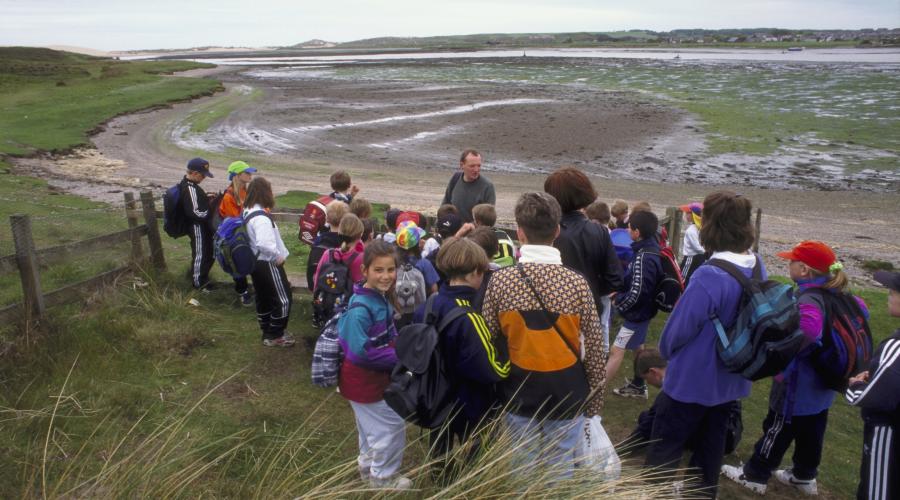
Forvie NNR - Visiting the reserve
With sand dunes, seals and birdlife, Forvie has something for everyone.

Introduction
Welcome to Forvie National Nature Reserve one of Scotland’s most dramatic stretches of coast. Shifting sands blown into towering dunes, a wide estuary of mudflats, open heathland dotted with summer orchids and a home to thousands of birds make this an amazing place to explore. And it’s a great place to blow the cobwebs away!
The Forvie NNR leaflet is a good introduction to the reserve.
Need to know - wildlife
Forvie is a brilliant reserve to visit and see wildlife throughout the year; it is a special place for both birds and seals and we ask that you help us to protect the wonderful wildlife found here. Please do not disturb breeding or roosting birds or the seals who haul out on the shore.
1 April - 31 August - Bird breeding season
During the bird breeding season (April to August) the southern area of the reserve is closed to protect breeding birds. Do not enter this area - it is marked by a fence and includes the dunes and intertidal areas. It is an offence to disturb breeding birds.
In the breeding season take extra care in the eider zone (marked by signs on the paths) and keep dogs under close control or on a short lead.
Winter roosting birds
In the winter please prevent your dog from approaching birds roosting on the shoreline.
Seals - all year round
Seals are one of our most iconic species and there is a large seal haul-out on the mouth of the Ythan. The best view of them is from the south side of the river - you can reach a good viewpoint from the car park at Beach Road in Newburgh.
Forvie is a designated seal haul-out site; it is an offence to intentionally or recklessly harass a seal at these sites. If you ever think you are witnessing a wildlife crime here, please contact Police Scotland on 101.
If you are visiting Forvie please give the seals sufficient space - if you see their heads coming up, the seals starting to shift around or become agitated - you are too close and need to move back. Please keep dogs under control or on a short lead and away from seals.
You can find out more about seal haul-out sites and how to safely watch seals on the Marine Scotland blog about interacting with seals. You can also watch a video on how to watch seals responsibly here.
Facilities for visitors
Visitor centre
April to October open daily staff permitting. November to March open Monday to Friday.
You’ll find a series of displays, a film presentation and tactile exhibits about Forvie.
Telephone: 01358 751330
Toilets
April to September - the visitor centre toilets are open daily from 10am - 4:30pm. October to March open 10am-4pm. The visitor centre toilets are accessible.
There are public toilets at the harbour in Collieston, and at the Newburgh Inn in Newburgh. Both are open all year round through the publicly available toilet scheme.
Wildlife hide
The Waulkmill hide is at Bridge of Forvie (grid reference: NK 004287). Overlooking mudflats where the River Ythan begins to open out into the estuary the hide provides good views of wading birds.
Getting here
Forvie NNR is on the east coast of Scotland approximately 26 kilometres north of Aberdeen.
By public transport/walking
The X63 Stagecoach Bluebird bus runs between Aberdeen and Peterhead (via Cruden Bay) and is the nearest bus service to get to Forvie NNR. Ask to get off at the 'Collieston Cotehill Crossroads' to go to Forvie visitor centre and the reserve on the north of the estuary - it's a 20 minute walk from the crossroads. For the NNR south of the estuary and to get to the best seal viewing spot, get off the bus at the Newburgh Inn in Newburgh village, follow Beach Road to the car park at the end and then go through the sand dunes to the estuary - it's an approximate 15 minute walk. The bridge to cross the river/estuary is the road bridge near Waterside - there is a path between the NNR car park at Waterside and Newburgh.
By car
Head north out of Aberdeen on the A90, turning onto the A975 to Cruden Bay. There are three main entrances to the reserve with car parks.
Car parks
Newburgh: follow Beach Road at Newburgh Inn, AB41 6BY. This is the closest car park to the beach and the best place to view seals.
Waterside car park: 1.5 kilometres north of Newburgh.
AB41 6AB is the nearest postcode.
Visitor centre car park: 5 kilometres north of Newburgh. Turn right at the Collieston crossroads, and follow the signs to the centre.
AB41 8RU is the nearest postcode.
Waulkmill hide: turn left off the A975 opposite the Collieston junction.
AB41 8RL is the nearest postcode.
There are also a number of lay-bys just off the A975. These offer good views across the NNR.
Map
Twelve miles north of Aberdeen, through Newburgh off the A975. Aberdeen-Peterhead (via Cruden Bay) buses stop at Collieston crossroads, then walk to visitor centre (twenty minutes) or from Newburgh to the estuary (fifteen minutes).
Seasonal highlights
There is something to see at any time of the year. From April to August, alternative routes are provided around the tern breeding area.
Spring
Eider ducks are all around, with up to 2,000 gathering to nest in the heather and grass. The best place to see these birds is the lower Ythan estuary, where you can watch them diving for mussels. Terns also arrive in spring. Meanwhile, the cliffs are dotted with spring-flowering primroses, cowslips and butterwort. The large seal haul-out can be viewed from Newburgh beach.
Summer
Visit Forvie in August and find a vast swathe of purple carpeting the dunes. The sea cliffs dazzle with colour as pink-flowered thrift, sea campion, kidney vetch and purple northern marsh-orchid come into bloom. The sheltered beach of Hackley Bay is a real smuggler’s cove. You can watch cliff-nesting fulmars feeding chicks on their nests.
Autumn
The autumn colours are stunning at Forvie, with the purple of the blooming heather dotted with glistening crowberry. Carpets of lichen are clearly visible and there are fungi of all shapes, sizes and colours.
Winter
Come in winter to enjoy the swirling patterns of the shifting sands. Watch the overwintering waders, and perhaps even spot some snow buntings.
Trails
You can explore Forvie from either the Waterside car park on the estuary side or from the visitor centre at Colliston. You can find a map of the trails in our leaflet.
Waterside
From here, follow the Dune Trail to explore the Ythan estuary, the dunes and beach. During the summer the southern section of the dune system is closed to protect breeding terns and eiders. In winter, explore more widely through the dunes, but keep your distance from seals and pups.
Visitor centre (Collieston)
From here, take the Sand Loch Trail or Heath Trail around the northern section of the reserve.
Hackley Bay
A trip to this wonderful hidden bay makes an enjoyable short extension to either of the way-marked trails. There are steps down to the beach at the south side of the bay. Although the route to Hackley Bay is not waymarked, the start of the trail is marked with a viewpoint symbol.
If you’re looking for a full day’s walk, the three routes can be combined to create a much longer day out.
Find out more on
Related Links
- Designation and management of Scotland’s National Nature Reserves
- Learn more about other protected areas
Sand Loch Trail (starts at visitor centre)
This path leads from the Forvie Centre to the Sand Loch and back. Look out for tufted ducks and gulls on the water and enjoy the views from the seats.
Heath Trail (starts at visitor centre)
This circular trail meanders through quiet heathland with the ground carpetted in heather, crowberry and lichens. The best time for wild flowers is May and June. If you get tired, a shortcut gives a shorter route of 1.4 miles (2.2 km).
Dune Trail (starts at Waterside car park)
This path leads past the estuary, through Forvie’s dramatic dune landscape and out onto the wide open beach. On the way back you’ll pass near the ruins of Forvie Kirk and the site of the village, engulfed by sand in a nine-day long storm. For an easier option you can follow the path alongside the estuary “there and back” to a viewing area.
Cliff Trail via Hackley Bay
Hackley Bay is a stunning hidden bay and makes a great extension to either the Dune or the Heath Trail.



